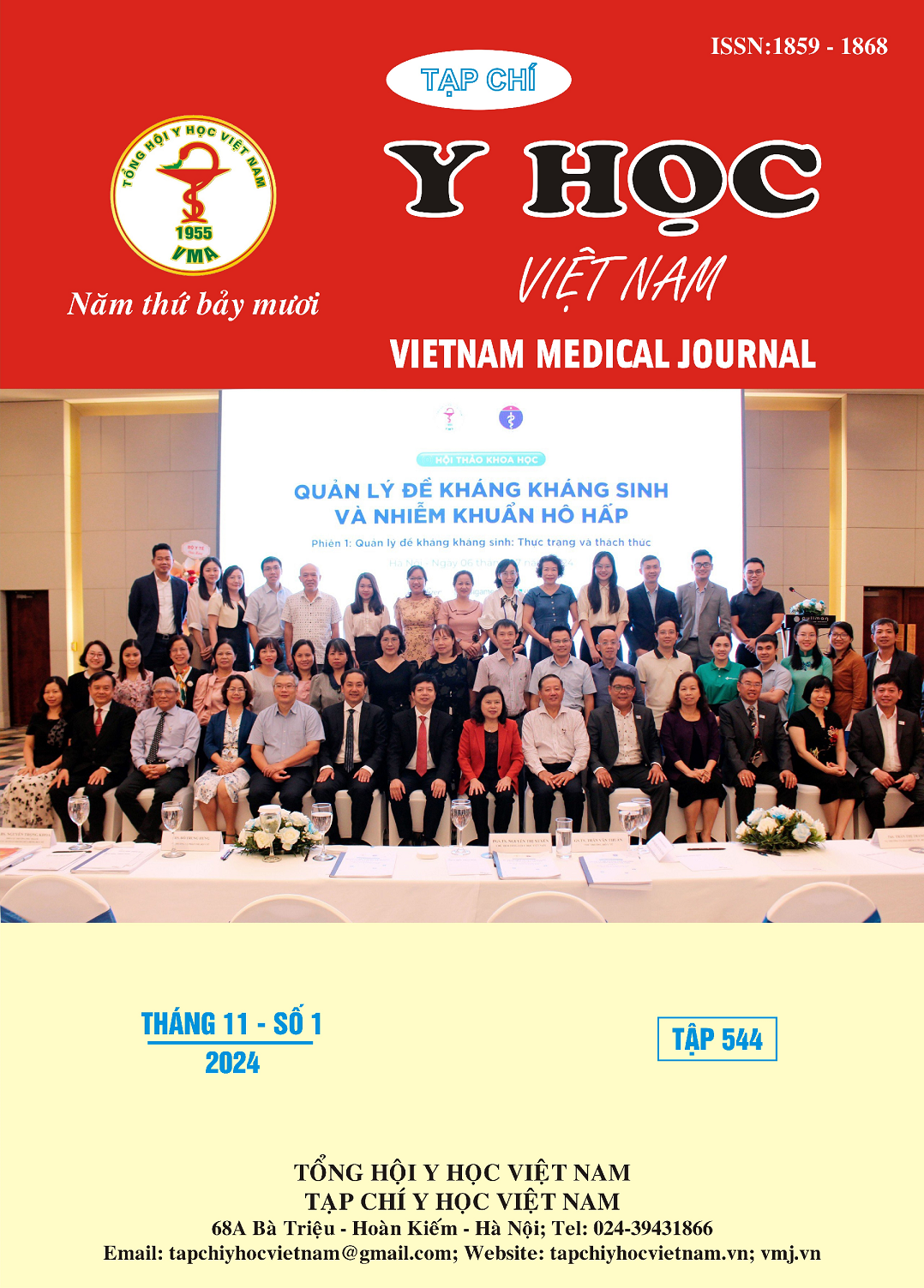SITUATION OF VENTILATION-ASSOCIATED PNEUMONIA IN THE DEPARTMENT OF INTENSIVE CARE AND POISON CONTROL – SAINT PAUL GENERAL HOSPITAL 2023 – 2024
Main Article Content
Abstract
Objective: Describe the current situation of ventilator-associated pneumonia and some clinical and paraclinical characteristics of patients with ventilator-associated pneumonia at the Department of Intensive Care and Poison Control -Saint Paul General Hospital. Method: Cross-sectional, longitudinal study, data was collected on all mechanically ventilated patients in the department of Intensive Care and Poison Control – Saint Paul General Hospital from August 2023 to July 2024. Results: 73 patients were involved this study in which male/female ratio was 1,5, the mean age was 71,44 ± 14,40, the most common age group was 60 - 80 years old. The prevalence of ventilator-associated pneumonia was 50.7%, of which early-onset VAP accounted for 45.9%, late-onset VAP accounted for 54.1%, the risk of VAP was 9.067 times higher when on mechanical ventilation for more than 6.5 days (95%CI: 2.35 - 35.02, p < 0.001), common clinical symptoms were new onset of purulent secretion, changes in sputum characteristics with over 90%, alterations in the level of dyspnea in 83.8%, new rales accounted for 97%, 94.56% of patients experiences from worsening gas exchange with 67.5% increased in Fi02. There was 40.5% of VAP-patients had increased white blood cell count above 12 G/l, increased PCT concentration was found in 91.42%, with 64.8% increasing above 2 ng/ml. The lesions on diagnostic imaging were mainly new infiltrates with 59.5%. Conclusion: The prevalence of VAP in the study was relatively high, duration of mechanical ventilation over 6.5 days increased the risk of VAP up to more than ninefold. In VAP patients, common clinical symptoms were: new onset of purulent secretion and changes in sputum characteristics, new rales, worsening gas exchange characterized by increasing FiO2; in terms of paraclinical tests, increased white blood cell above 12G/L and pro-calcitonin concentration above 2 ng/ml or new infiltrates in chest x-ray were also common ones.
Article Details
Keywords
VAP, ventilator days, early diagnostic symptoms.
References
2. Giang Thục Anh (2004). Đánh giá sử dụng kháng sinh điều trị nhiễm khuẩn bệnh viện tại khoa Điều trị tích cực, Bệnh viện Bạch Mai năm 2003-2004. Luận văn bác sĩ nội trú bệnh viện, Đại học Y Hà Nội.
3. Sievert DM, Ricks P, Edwards JR, Schneider et al (2013). Antimicrobial-resistant pathogens associated with healthcare-associated infections: summary of data reported to the National Healthcare Safety Network at the Centers for Disease Control and Prevention, 2009-2010. Infect Control Hosp Epidemiol., 34(1):1-14
4. Dongol S.et al. (2021). Epidemiology, etiology, and diagnosis of health care acquired pneumonia including ventilator-associated pneumonia in Nepal. PLoS ONE 16(11): e0259634. https://doi.org/10.1371/journal.pone.0259634
5. Vanhems et al (2011). Early-onset ventilator-associated pneumoniae incidence in intensive care units: a surveillance-based study. BMC Infectious Diseases 2011, 11:236.
6. Bùi Hồng Giang (2013). Nghiên cứu đặc điểm vi khuẩn và điều trị nhiễm khuẩn bệnh viện tại khoa Hồi sức tích cực Bệnh viện Bạch Mai năm 2012. Luận văn Thạc sĩ Y học, Đại học Y Hà Nội.Nguyễn Ngọc Quang, Đoàn Thị Mai Phương, Lê Thị Diễm Tuyết, Đặng Quốc Tuấn (2012). Tình hình viêm phổi liên quan đến thở máy tại khoa Hồi sức tích cực bệnh viện Bạch Mai. Nội khoa Việt Nam, 5: 57 – 62
7. Lê Sơn Việt. Đánh giá tình hình nhiễm khuẩn bệnh viện tại khoa hồi sức tích cực bệnh viện Bạch Mai năm 2019-2020. Luận văn thạc sỹ y học. Đại học Y Hà Nội.2020.


